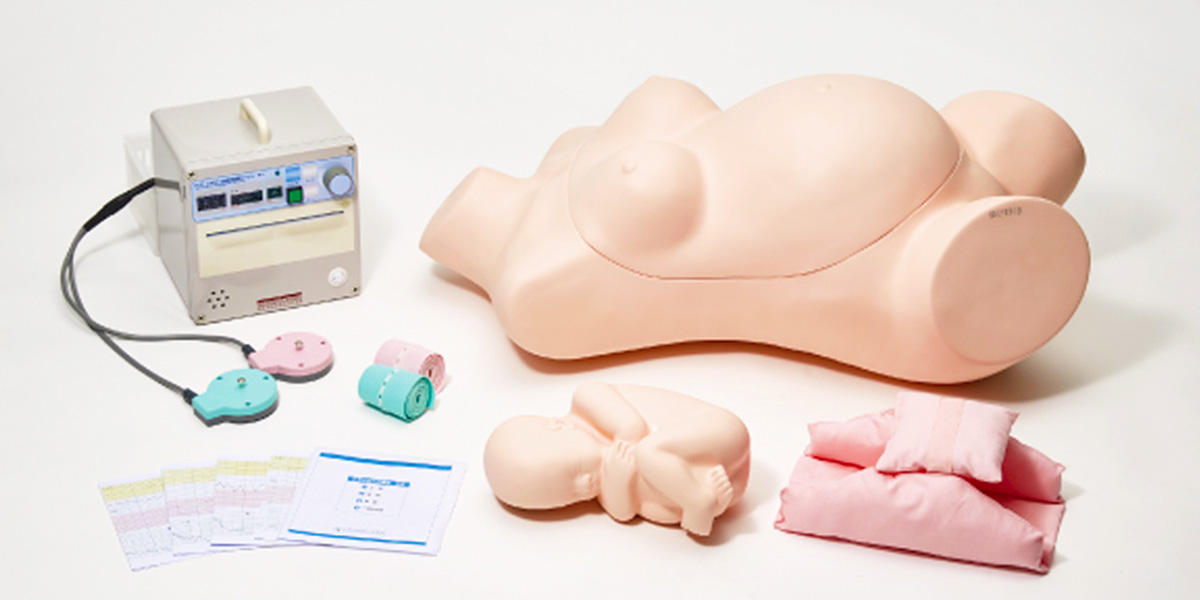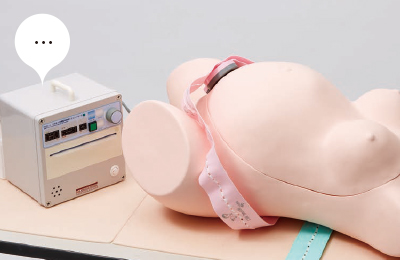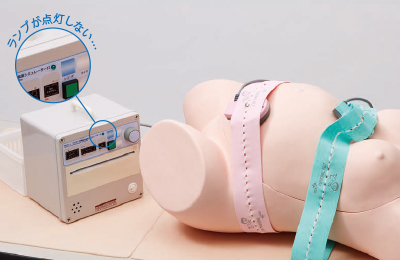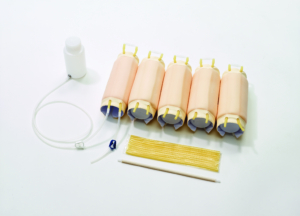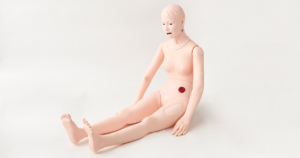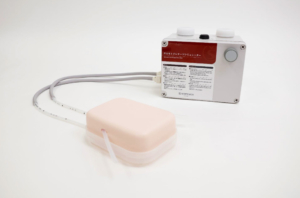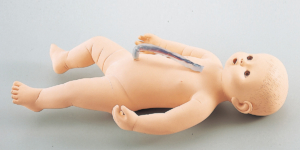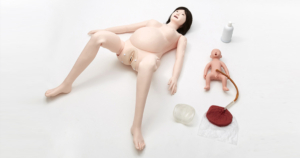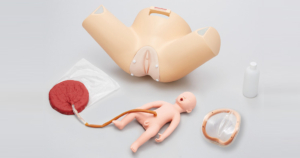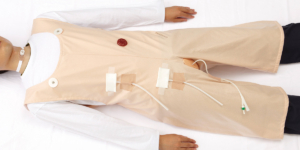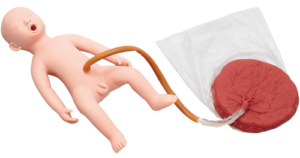●Weight/Approx. 10kg
●Case size/W96×D40×H32
●Accessories/Fetus (for palpation), Simulation Doppler transducer(1 piece), Simulation labor transducer (1 piece), Doppler transducer fixing belt(1 piece), Labor transducer fixing belt (1 piece), Baby powder, Fetal cushion, Simulation recording paper (4 types), AA batteries (4 pieces), Storage bag
Product feature video
Sakamoto Cardiotocograph Simulator 2 (M191-1)
Product overview
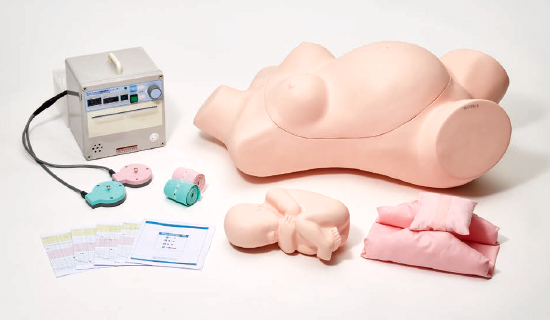
*The Sakamoto Cardiotocograph Simulator 2 can be used for nurse and midwife training. Please note that the simulator does not provide a written or audio record of the heart rate.
Practice
Practical measurements can be carried out on the body which resembles the 39th week of pregnancy.
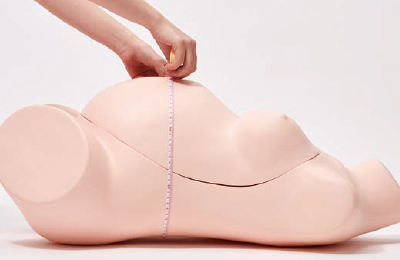
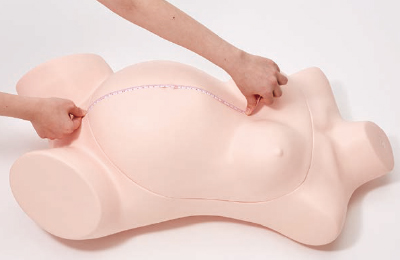
The abdomen is soft so that training in palpation of the fetus is possible.The accessory fetus for palpation has a built-in skull and pelvis.
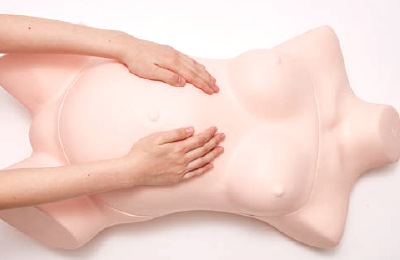
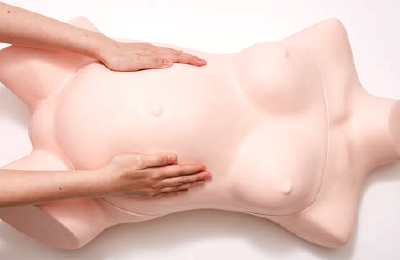
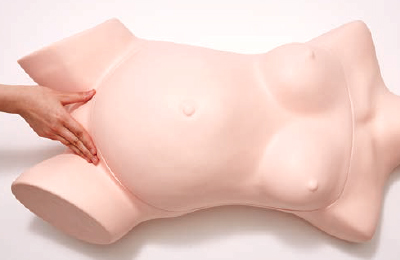
Practice can be carried out by securing the Doppler transducer and labor pain transducer belts. You can look at the box to check if the belts are attached correctly.
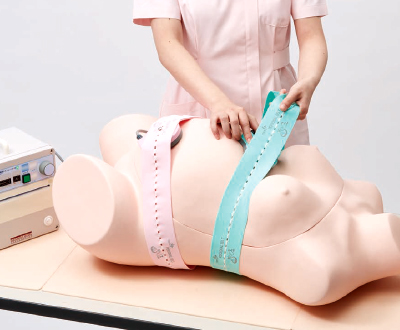
If the Simulation Doppler transducer is properly attached, you will be able to hear heart sounds through the box.
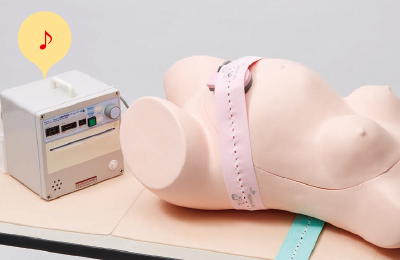
If the Simulation labor transducer is not secured correctly, the light on the box will not turn on.
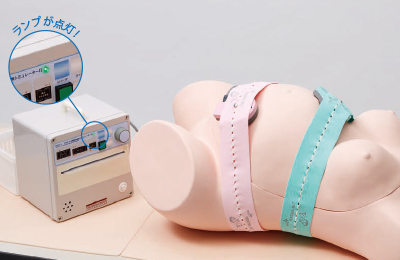
By fixing the transducer, you can listen to the heart sounds from a special box. After confirming the position and orientation of the fetus by palpation, you can accurately fix the transducer to listen to three levels of heart sounds: normal (120 BPM), tachycardia (180 BPM and up), and bradycardia (up to 110 BPM).
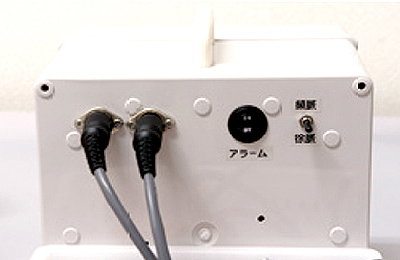
The heartbeat can be heard coming from the exclusive box, and there are switches at the back for setting the heartrate and alarm.
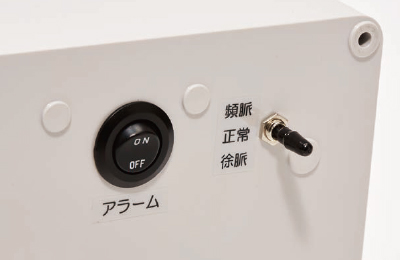
The heartbeat can be heard coming from the exclusive box, and there are switches at the back for setting the heartrate and alarm.
Four types of wave pattern (normal, tachycardiac, bradycardiac or transient bradycardiac) can be practised.
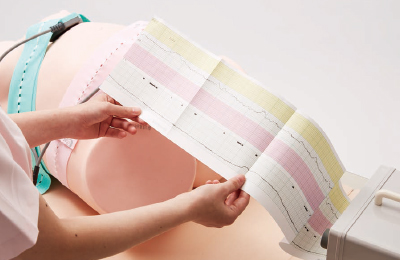
Recording paper which is the same size as actual paper can be held in the hand while practising. (The recording paper is already printed on.)
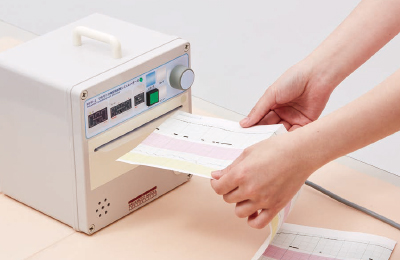
Recording paper can be inserted into a exclusive box.

The size of all recording paper is 15cm x 60cm


